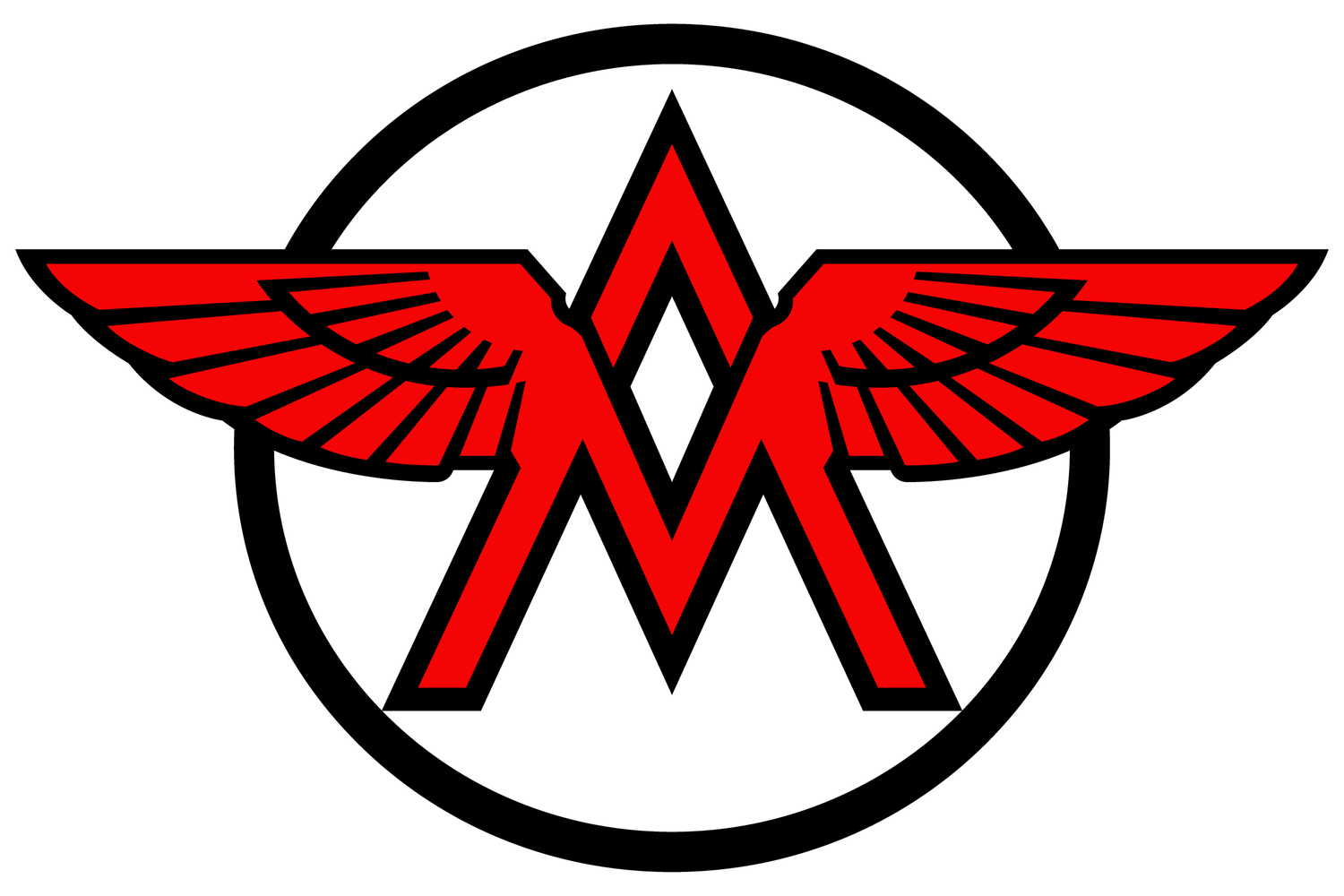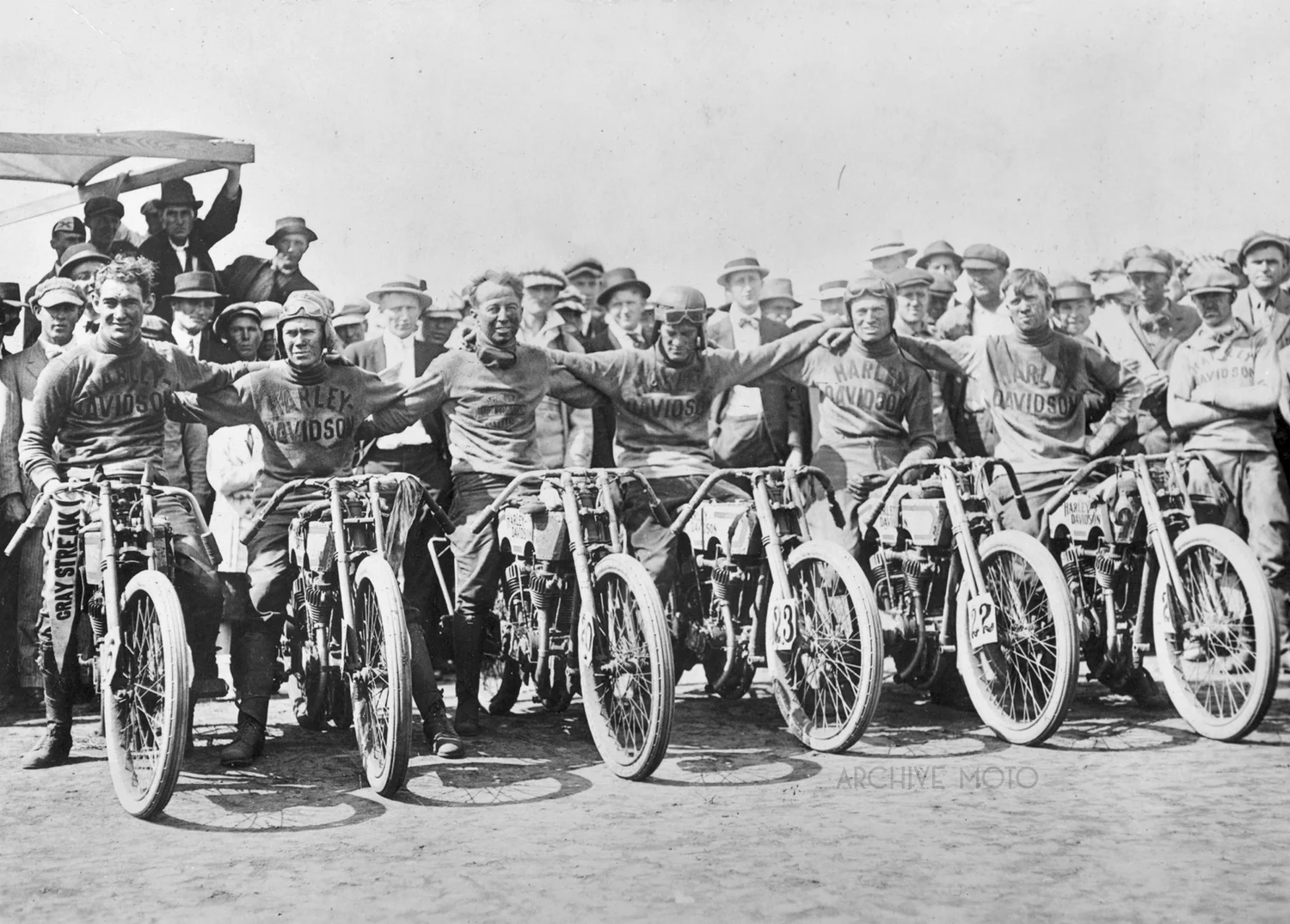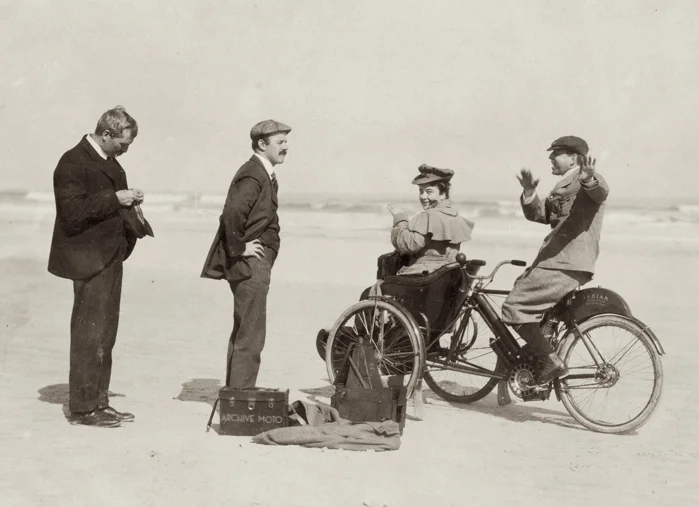John Charles Seymour talking shop with Indian veteran Charles Gustafson Jr. on the beach at Daytona in early January 1926. Johnny was the fearless champion, a young racer recited to the team during the sport’s spectacular revival following WWI and one of the few men left at the top of the professional racing game by the mid-to-late '20s. Gustafson was Indian royalty, having been as good as born into the company through his father’s early relationship with Indian and Hedstrom during the companies birth and later engineering contributions such as the side-valve platform itself. Gustafson Jr. went to work alongside his father early on at the company and raced alongside the pioneer’s of the sport, and when a fellow founding father at Indian, Charles Spencer, left the experimental department in 1924 it was Gustafson who picked up the reigns during a frenzied point in engine development in Springfield. On January 11th and 12th, 1926 the men were back on the sand in Florida for the same reason that so many speed-obsessed had traveled to those hallowed shores since the turn of the century; to crack a throttle so wide open as to see just how close they could get to the edge without going over.
It was his distinctive posture, the way his long back arched high above his shoulders when he tucked in tight on top of his Harley-Davidson that earned him the nickname “Camelback.” Harry Otto Walker was and will always be one of America’s most popular and recognizable pioneer motorcycle racers, and photographs like this one perfectly illustrate why. Walker was one of the first racers to be handpicked by Harley-Davidson’s Bill Ottaway in 1914 when he began forming the Motor Co.’s first factory racing program. It was Walker who won the first official factory victory at the International Grand Prize 300-Mile Road Race in Venice on April 11, 1915, and it would be Walker who was most consistently marking up podium finishes and broken records for the company over the following months and years. Between 1915 and 1918 the California native racked up over a dozen first place finishes and even more speed records across the country, including a huge first place at the Dodge City 300-Mile race in July, 1915.
Scale. When we look back and try to imagine what it must have been like sit atop one of America’s infamous board track motordromes it is often the scale of the venue which eludes us. We have little to nothing like them today, and at the height of their popularity in the early teens, there were little else like them in the world. Another aspect of the motordrome which tends to trip up our daydreams is the variety in board track design, which produced a general congealing of all wooden racing tracks under the single name of motordrome over time. From the the first circular motordromes to the massive oval speedways, and even the small portable wall rider thrill shows have all, overtime, been referred to as motordromes. The truth is, that when most folks imagine board track racing we tend to clump together a version of all three types of venues.
New York photographer and photography supply dealer Thomas K. Hastings, and his lovely bride determined to take a bit of an adventure in January of 1906. An avid automobile enthusiast since the turn of the 20th century, Hastings had about enough of the large and finicky European touring cars by the time Oscar Hedstrom and George Hendee released their Indian Tri-Car three-wheeler in 1906. The design was relatively simple, a throwback to the earliest days of wheeled personal transportation experimentation, reintroduced to America in 1906 with the refinement that only Indian could produce. The machine was made up of a standard production model with a 3 1/2 HP engine, rigged up to a forward-facing two-wheeled, comfortably upholstered chair assembly.





